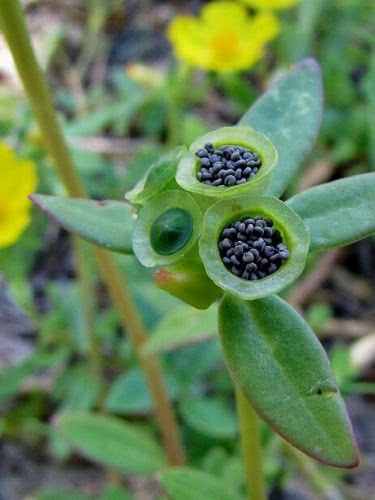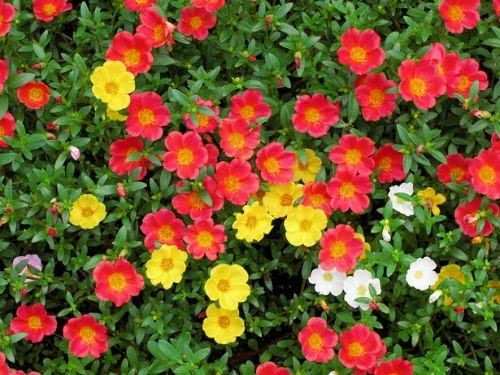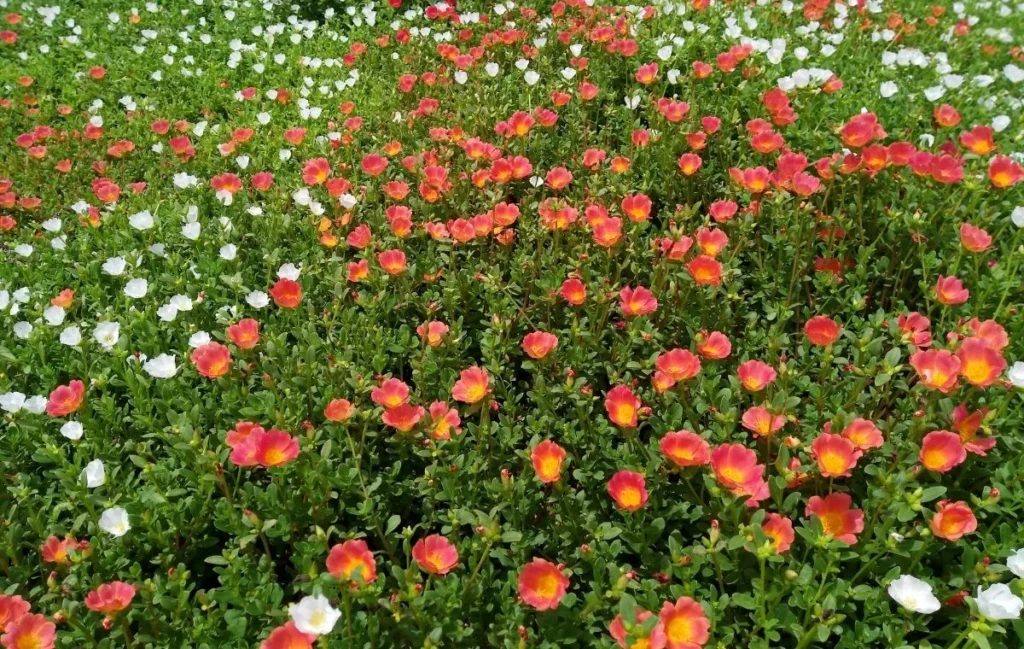Purslane is a succulent, ruderal, annual, cosmopolitan plant of great versatility. Beyond its ornamental appeal, it holds significant medicinal value and is considered an unconventional food plant, known as a UFP. This herbaceous species grows prostrate and creeping, featuring a smooth and reddish stem, extensively branched with an annual lifecycle. Its leaves, succulent and oval to spatulate, are simple, smooth, and of a bright green color. They are either alternately or oppositely arranged, emerging clustered at the stem nodes.

Its axillary flowers are hermaphroditic and solitary, with a simple pentamerous corolla. Depending on the cultivar, they can come in various colors such as yellow, red, orange, pink, white, and blends of these hues. These flowers open only during sunny mornings, lasting a few hours, and can appear at different times of the year, less frequently in winter and more commonly during rainy periods.
The ensuing fruit is a dehiscent capsule type, containing numerous tiny seeds. Purslane is one of the rare species that utilizes both the CAM and C4 photosynthesis mechanisms.
Frequently cultivated in pots or planters, it serves purposes in ornamentation, cuisine, and medicine. It’s an excellent choice for a kitchen windowsill, combining functionality with ambiance. In gardens, it can be used to form massifs or borders, imparting a delicate and rustic look. Culinary applications include consuming purslane raw, fried, cooked, or pickled in salads, tempuras, soups, and sautés, imparting a slightly tangy and salty flavor. Widely consumed in Europe, Asia, the Middle East, and Central America, it’s a key ingredient in the traditional French soup “soupe bonne femme,” Lebanese “fatuche” salad, and Portuguese purslane soup.
Its small seeds are also edible, consumed raw, toasted, or sprouted. Rich in vitamins B and C, as well as omega-3 fatty acids, it’s a low-maintenance plant.

Purslane also excels as a companion plant, covering and safeguarding the soil, keeping it moist and fertile for other plants. Its ability to penetrate hard soil improves its texture and creates pathways for roots of other species to penetrate.
It thrives in partial shade or full sun, favoring tropical and subtropical climates. With rapid growth, it prefers well-draining soil, ideally sandy and rich in organic matter. It’s undemanding in cultivation, requiring slightly spaced watering based on substrate moisture levels. While it’s not frost-tolerant, it withstands cold temperatures. Propagation is possible through stem cuttings, though seed propagation is more common.



